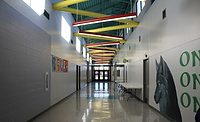The Centers for Disease Control and Prevention (CDC) is releasing new science-based resources and tools for school administrators, teachers, parents, guardians and caregivers when schools open this fall.
With states, cities, and communities around the United States experiencing different levels of coronavirus transmission, jurisdictions should ensure appropriate public health strategies are in place to slow the spread of COVID-19 as the first step in creating a safer school environment, says the CDC. Then, working in collaboration with their state and local health departments, school administrators can employ strategies that best match the local conditions and actions that are practical and feasible in their schools to help protect the health and safety of everyone – including students, teachers, and other staff, notes the organization.
“It is critically important for our public health to open schools this fall,” said CDC Director Dr. Robert R. Redfield. “The CDC resources released today will help parents, teachers and administrators make practical, safety-focused decisions as this school year begins. I know this has been a difficult time for our Nation’s families. School closures have disrupted normal ways of life for children and parents, and they have had negative health consequences on our youth. CDC is prepared to work with K-12 schools to safely reopen while protecting the most vulnerable.”
The resources and tools made available support how to open schools safely by promoting behaviors that prevent spread, altering how a school and school day is structured, and outlining how to keep the school environment healthy through cleaning, proper ventilation, and other practices, says a CDC press release. The resources and tools also describe what to do to guard against someone who might be sick from infecting others and what to do if this occurs.
The resources, available at https://www.cdc.gov/coronavirus/2019-ncov/community/schools-childcare/index.html, also provide students, school administrators, parents, guardians, or caregivers the information they need to guide their decision-making on attending in-person curriculum and how to adapt to local conditions.



